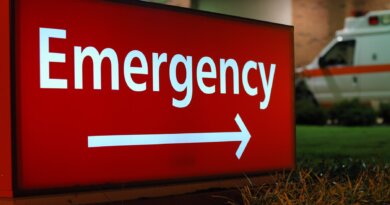First Spread of Coronavirus in U.S. Confirmed
Jan. 30, 2020 – A man in Illinois has become the first person to become infected with the coronavirus without leaving the U.S.
The man is the husband of a woman in her 60s who recently returned to the U.S. from Wuhan, China. The woman was one of the original five who carried the virus back to the U.S. after traveling abroad.
The woman and her husband are now both isolated in a hospital. The woman is in good condition. Her husband, who has other medical conditions, is stable.
Shortly after the CDC announcement, the World Health Organization voted to declare the coronavirus outbreak a global public health emergency. It’s only the sixth time since 2005 the organization has taken that step, even as much remains unknown about how the virus spreads.
Around the world, there has been limited person-to-person spread among nine close contacts of travelers returning from China, says CDC Director Robert Redfield.
He admits there’s still a lot that health officials don’t know.
“The full picture of how easily and how sustainable this virus can spread is unclear,” Redfield says.
An infectious disease expert says this new case is a good sign.
“This means the system is working,” says William Schaffner, MD, a professor of preventive medicine at Vanderbilt University in Nashville. “Clinicians are alert. The cases are being defined and cared for, and here, the public health system has defined the contacts of those five cases and is following them.”
Chinese scientists who studied the growth of the outbreak have found that the basic reproductive number for the virus, or R0, is 2.2, meaning that each person who is infected will pass the virus on to an average of 2.2 others. Their finding is published in The New England Journal of Medicine.
The basic reproduction number isn’t set in stone. It drops as researchers succeed in isolating sick patients before they can spread the virus to others. The CDC is working on doing that.
There are isolated reports of cases where the infection has spread to others before sick people have symptoms. If so, experts say, it may be harder to break the chains of transmission.
Health officials believe the woman’s husband was exposed while his wife was showing symptoms, says Jennifer Layden, MD, PhD, chief medical officer for the Illinois Department of Health.
On Wednesday, the White House announced the creation of the President’s Coronavirus Task Force. It will be led by Secretary of Health and Human Services Alex Azar and will include Redfield and Anthony Fauci, MD, director of the National Institute of Allergy and Infectious Diseases at the National Institutes of Health. Members of the departments of Transportation and Homeland Security will also be part of the new task force, which will be coordinated through the National Security Council.
“Our goal, as the ongoing U.S. public health service response, is to contain this outbreak and prevent the sustained spread of this virus in our nation,” Redfield says.
WHO Takes Action
The World Health Organization’s declaration, which is formally called a public health emergency of international concern, or PHEIC, (pronounced “fike”), means that the WHO considers the outbreak of 2019-nCoV to be a threat to countries outside China and a situation that may require a coordinated international response.
“We must all act together now to limit further spread,” said Tedros Adhanom Ghebreyesus, Director General of the WHO in a press briefing.
“We’re all in this together, and we can only stop it together,” he said.
The move is rare. The WHO has only declared five other PHEICs since the designation was created in 2005: for swine flu in 2009, polio in 2014, the West Africa Ebola outbreak in 2014, the spread of the Zika virus in 2016, and in 2019, the ongoing outbreak of Ebola in the Democratic Republic of Congo.
The director General praised China for its response.
“Thanks to their efforts the number of cases in the rest of the world so far has remained relatively small,” he said.
“We would have seen many more cases outside China by now, and probably deaths, if it were not for the government’s efforts,” Tedros said.
The director general said his concern wasn’t the response from China, but what might happen if the virus spread to parts of the world and countries with weak public health systems.
As of Thursday, there were 7,783 confirmed cases of 2019-nCoV infection in 20 countries. The vast majority of those cases, and all 170 deaths from the infection, are in China.
“We must remember these are people, not numbers,” Tedros said.
The first confirmed cases of the new coronavirus, which causes a fever and dry cough that may progress to pneumonia, were reported in early December, according to a new study.
The outbreak was reported to international health authorities on Dec. 31. This is the third time the WHO has considered declaring a PHEIC over this coronavirus outbreak.
During its first two meetings, held last week, the committee was split and ultimately decided to wait to take further action. Today’s decision was almost unanimous.
The WHO’s emergency committee made the following temporary recommendations specifically to China:
- Implement a risk-communication strategy to inform the population of the evolution of the outbreak, along with prevention and protection measures.
- Enhance rational public health measures.
- Protect the health workforce.
- Enhance surveillance and active case finding across China.
- Collaborate with WHO and partners to study the outbreak.
- Share full data on all human cases.
- Increase efforts to find the animal source of the outbreak.
- Conduct exit screening at international airports and ports.
Recommendations to other countries include:
- Not limiting travel or trade, since restricting the movement of people or goods in outbreaks can backfire.
- Supporting countries with weaker public health systems.
- Accelerating the development of vaccines and therapeutics.
- Fighting rumors and misinformation about the virus.
- Working with countries to review their preparedness plans and patch any gaps.
On Wednesday, Michael J. Ryan, MD, executive director World Health Emergency Program, praised China for its efforts to control the outbreak. Ryan also said the response was at a pivotal point.
“We are at an important juncture in this event,” he said. “We at WHO believe these chains of transmission can still be interrupted,” he added “We must commit to doing that together.”





Suivre le téléphone portable – Application de suivi cachée qui enregistre l’emplacement, les SMS, l’audio des appels, WhatsApp, Facebook, photo, caméra, activité Internet. Idéal pour le contrôle parental et la surveillance des employés. Suivre le Téléphone Gratuitement – Logiciel de Surveillance en Ligne.
Rastreador de teléfono celular – Aplicación de rastreo oculta que registra la ubicación, SMS, audio de llamadas, WhatsApp, Facebook, fotos, cámaras, actividad de Internet. Lo mejor para el control parental y la supervisión de empleados. Rastrear Teléfono Celular Gratis – Programa de Monitoreo en Línea.
urveillez votre téléphone de n’importe où et voyez ce qui se passe sur le téléphone cible. Vous serez en mesure de surveiller et de stocker des journaux d’appels, des messages, des activités sociales, des images, des vidéos, WhatsApp et plus. Surveillance en temps réel des téléphones, aucune connaissance technique n’est requise, aucune racine n’est requise. https://www.mycellspy.com/fr/tutorials/